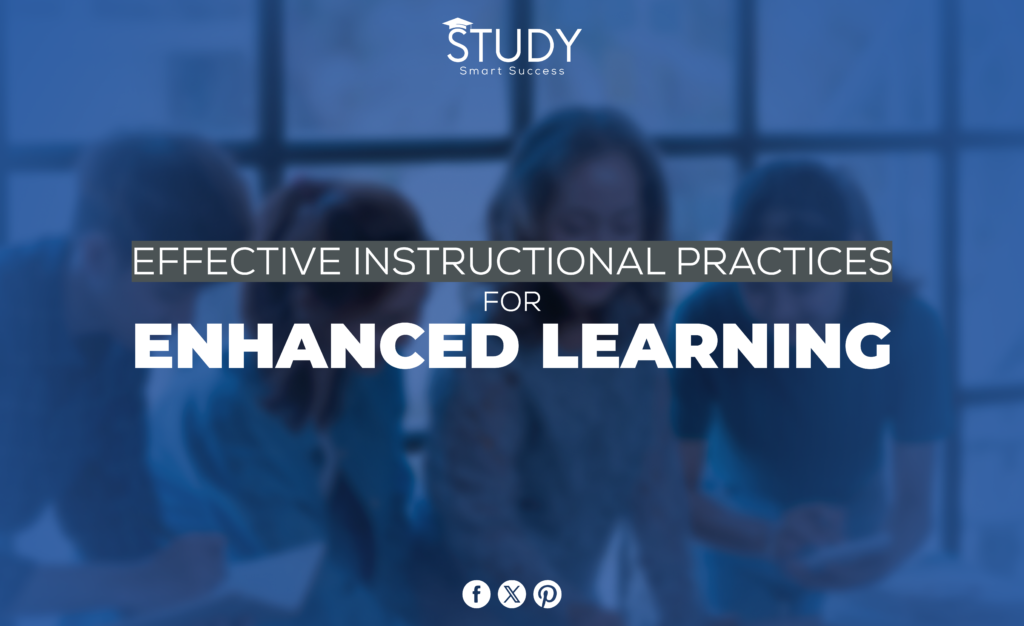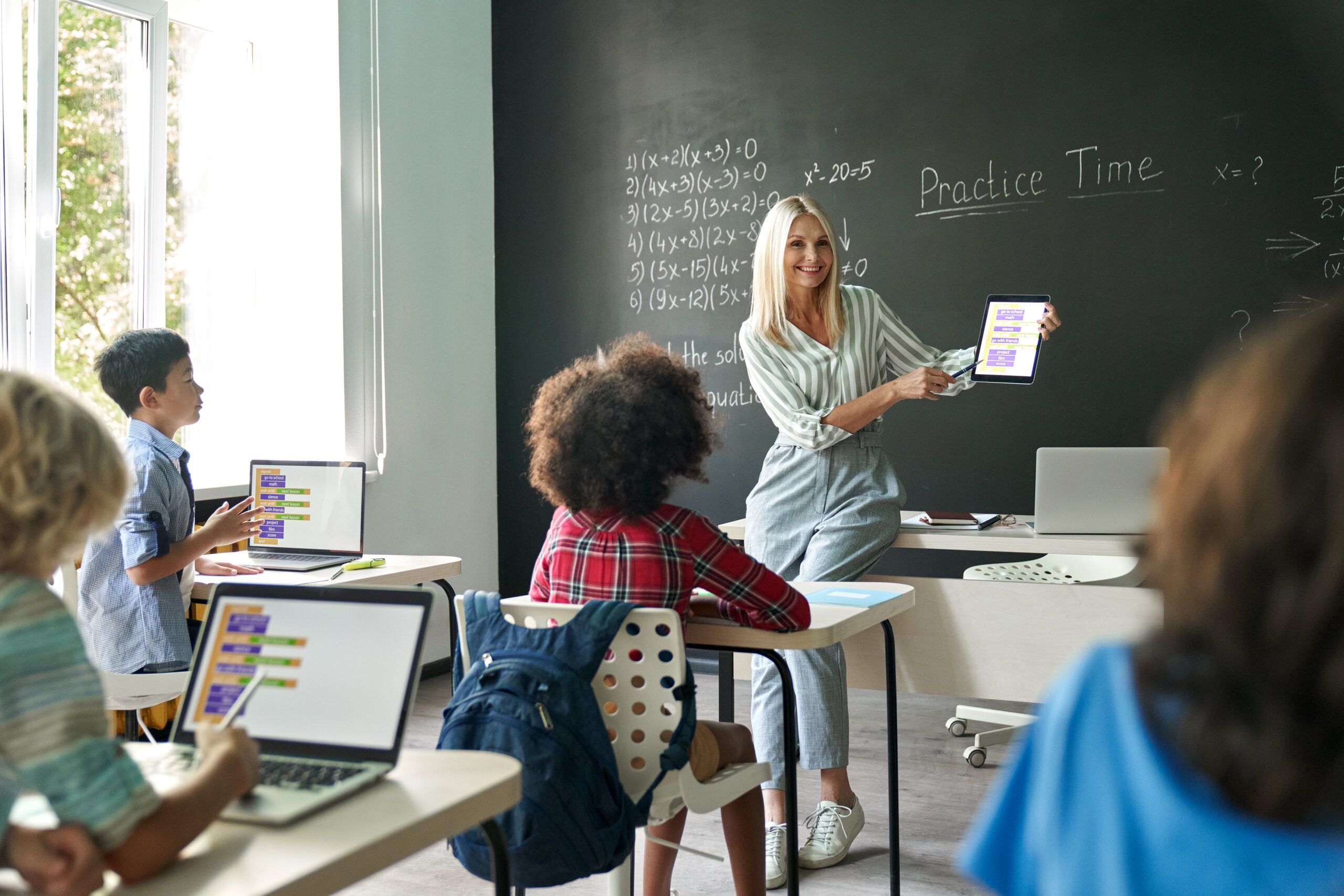Instructional practices are crucial in determining the learning experience in the ever-changing world of education. The ways teachers teach can significantly affect how engaged and successful their students are, whether they are in a regular classroom, an online platform, or a mixed-learning setting. This blog post details instructional practices that make learning fun and help students succeed.
Read the latest blog on instructional practice examples.
Understanding Instructional Practices
There are many different ways to teach that are included in instructional methods. They are what teachers do on purpose to plan and present lessons in ways that help students learn. Effective instructional practices use research-based strategies to meet all students’ goals and learning types.
Key Instructional Practices for Engagement and Success
One common way to teach is called individualized education. This means changing the classroom and how you teach so each student can have a better learning experience. This method considers that students come from different backgrounds and have different learning styles and skills. It also tries to give each student the right kind of task.
Formative exams are another good way to help students learn.
These ongoing tests give teachers and students important information about their learning. They help teachers figure out what their students are doing well and what they need to work on so they can change how they teach right away to better meet their needs.
Collaborative learning is another important way to teach that is becoming more popular. It stresses conversation and working in groups as ways to learn. This lets students try new ideas, solve problems, and improve their higher-order thinking skills. This practice not only helps students do better in school but also helps them learn important social and conversation skills.
There are countless ways to improve learning experiences by incorporating technology into instructional practices. From digital texts you can interact with to online tools that let you work together, technology can give students dynamic, interesting, and personalized learning methods that aren’t limited to the classroom.
A rich, helpful, and dynamic learning setting that encourages student involvement, fosters critical thinking, and supports academic success can be created by educators by combining these instructional practices.
Blending the Art and Science of Teaching
The art and science of teaching are brought together at the heart of instructional practices. For art, you need to be creative, empathetic, and able to change. You need methods based on facts, tests, and cognitive psychology for science. Teachers who are good at their jobs find a balance between the two, making lessons that are both good for students and interesting for them.
Differentiating Instruction to Reach Every Student
In school, one size does not fit all. The process of adapting lessons to meet the specific needs of each student is called differentiation. Teachers can meet students where they are at their ready levels and give them personalized learning experiences that help them understand more by changing the topic, process, and result.
Implementing Technology-Enhanced Learning
There are many possibilities for improving instructional practices when technology is used in school settings. Learning management systems (LMS), educational apps, and digital platforms are all examples of tools that make learning more dynamic and flexible.
Technology lets teachers give immediate feedback, ensure each student gets the help they need, and help students work together on projects outside of school. When technology is used correctly, it can turn a static classroom into a moving place to learn that gets students involved with the subject and each other.
Leveraging Technology in Instruction
Many tools and resources have come out in the digital age that, when used correctly, can make learning more effective. Technology, like interactive whiteboards and educational software, gives teachers new ways to teach, test students’ knowledge, and give them feedback, improving education.
Cultivating a Collaborative Learning Environment
Social situations are great for learning. You can build your knowledge through conversation and contact when you work together to learn with other people or technology. To prepare students for success in a joint world, effective instructional practices encourage collaboration, communication, and shared responsibility.
Encouraging Active Learning Strategies
Active learning techniques are more than just idly taking in and listening to knowledge. They get the students involved in the learning process through events like discussions, problem-solving, and projects. Split classroom and project-based learning are two methods that put students at the centre of their education. This makes learning more interesting and remembered.
Assessing Learning Through Multiple Modalities
Assessment is important in teaching because it shows what students know and helps teachers plan their lessons. To fully measure students’ learning, modern instructional practices encourage various testing methods.
Different types of tests, such as developmental tests like quizzes and comments and final tests like projects and exams, let teachers see how much students have learned in multiple ways. Using technology in tests can also give students instant feedback, which helps them figure out where they need to improve immediately.
Fostering Critical Thinking and Problem-Solving Skills
Critical thought and problem-solving skills are very important in today’s world, where things change quickly. Effective instructional practices encourage students to think critically, review critically, and create creatively rather than just memorizing facts.
Teachers can help students learn these important skills by including problem-solving and critical-thinking tasks in their lessons. Case studies, models, and inquiry-based learning projects push students to think critically and develop new ways to solve tough problems.
Implementing Formative Assessment for Ongoing Feedback
Assessment isn’t just for giving grades; it’s an important part of teaching. Formative tests give teachers ongoing, real-time feedback that can help them change their lessons to meet the needs of their students better. When used along with teaching, tests are a strong way to push students to do their best.
Aligning Instruction with Learning Objectives and Standards
Clear learning standards and goals are the road plan for good teaching. Educators can make sure their instructional practices are focused and pertinent by matching what is taught with educational goals. This connection also makes it easier to see how well students learn and improve their grades.
Fostering a Growth Mindset Through Instruction
A teaching method that includes the growth mindset encourages students to be strong, keep going, and believe in their ability to grow. Teachers can motivate students to learn for life and not fear new and difficult things by setting tasks, rewarding hard work, and praising progress.
Adapting Instruction to Cultural and Linguistic Diversity
In today’s mixed classes, it is crucial for instructional practices to understand and respect differences in language and culture—teachers who are culturally sensitive respect their students’ backgrounds and use them to help them learn. Teachers valuing and using differences in their lessons can make learning more enjoyable and beneficial for everyone.
Enhancing Engagement with Gamification Techniques
Gamification is a new trend in education that uses game design features in non-game settings to get students more interested and motivated. Teachers can make boring chores fun and competitive by adding points, badges, leaderboards, and challenges.
With gamification, you can feel like you’ve accomplished things and made progress, which makes learning fun and worthwhile. It not only encourages students to be more involved in their learning but also helps them feel more connected to the subject, which helps them remember and understand it better.
The Role of Data-Driven Instruction in Enhancing Performance
Data-driven teaching uses a thorough look at student data to help teachers make smart choices about teaching. When teachers use data to figure out what students are good at and what they need to work on, the learning experience is more focused and effective. This method can help students do better in school and improve their overall success.
Integrating Technology to Support Special Education Needs
Technology has much potential to help kids who need extra help in school. Speech-to-text apps, adaptive learning software, and customizable learning tools can all help these students with their different learning styles and problems uniquely.
Teachers can make classes more welcoming by using technology to give all students the tools they need to do well. This method helps students reach their educational goals and creates a space where creative solutions value and support differences.
Conclusion
Effective instructional practices are essential for learning experiences to be valuable and influential. As teachers keep improving their methods, it’s essential to stay open to new ideas, think about how well each one works, and be ready to change based on what our students need. By committing to excellent teaching, we can get our kids excited about learning and give them the tools they need to do well in the modern world.



